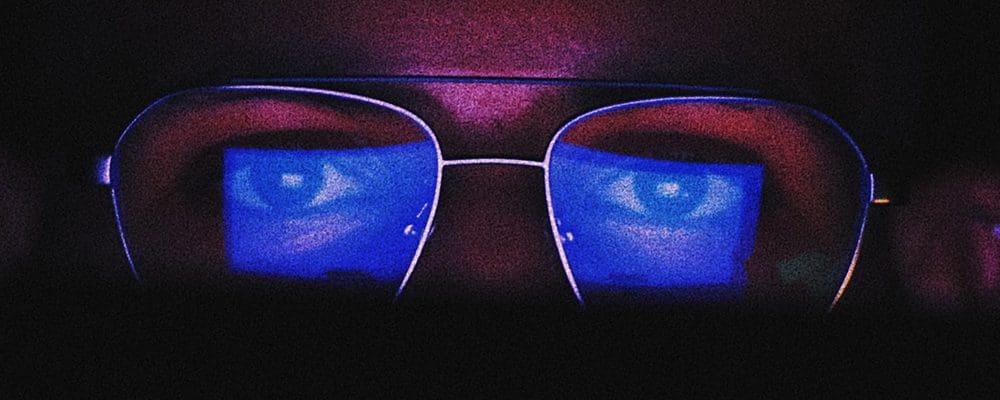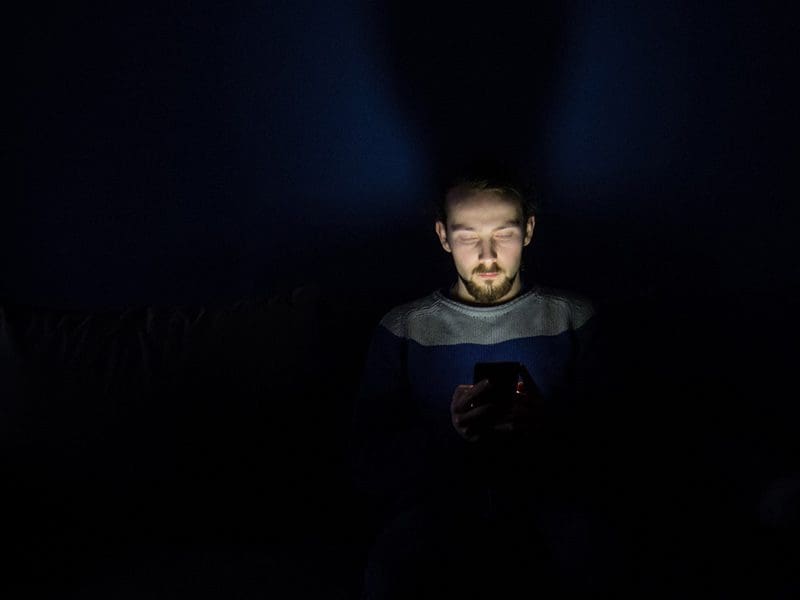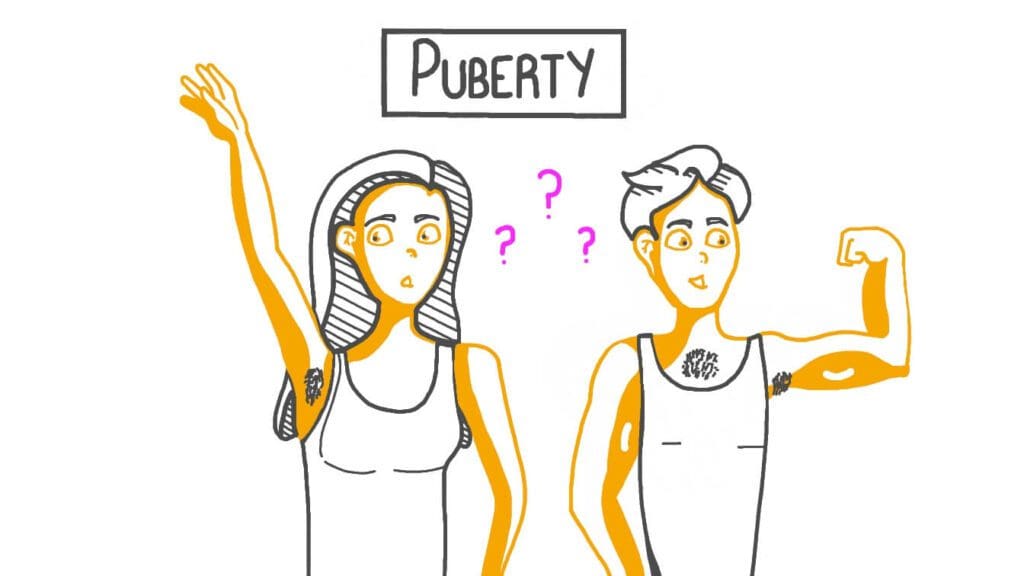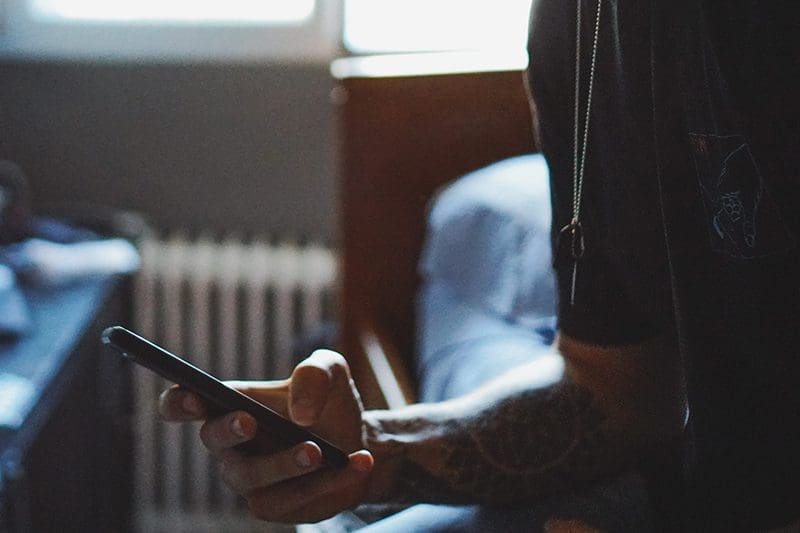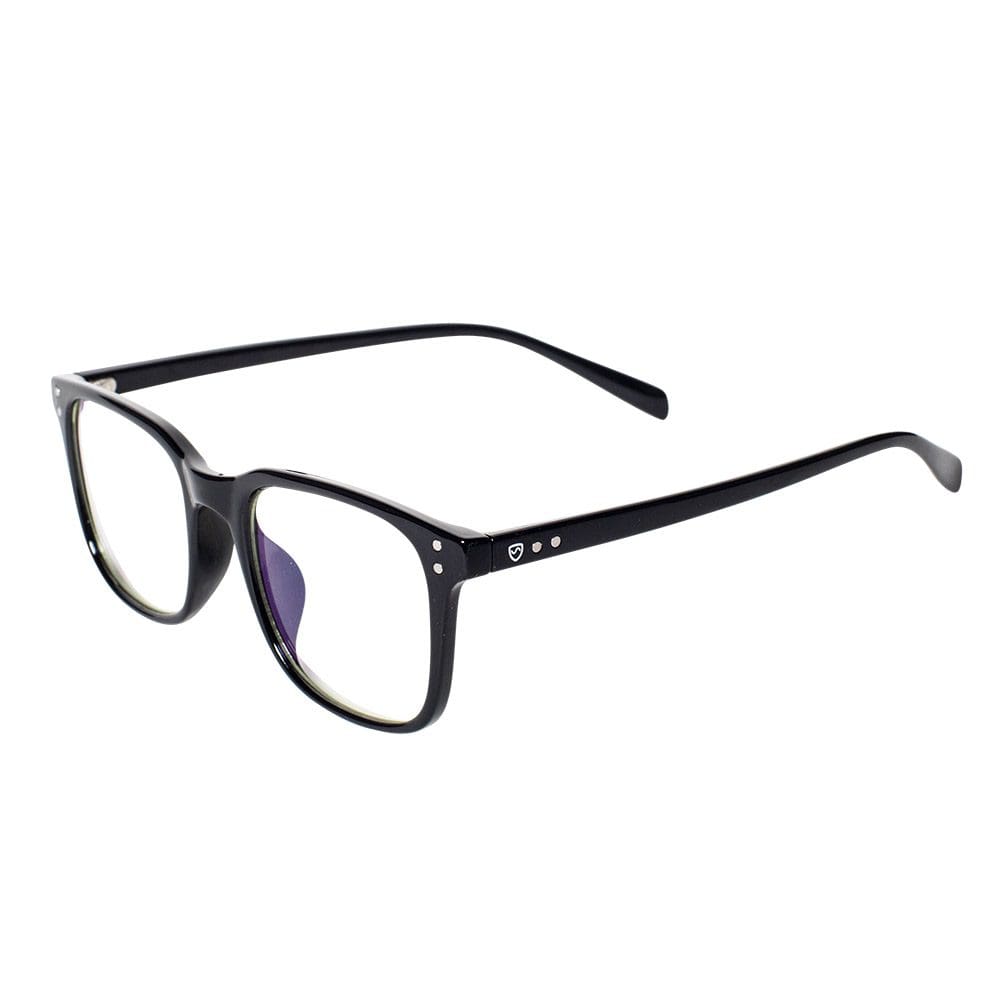The term “blue light” was searched 230,000 times on Google within the first five months of 2021. People’s concerns with blue light started increasing as soon as the pandemic began and kids and teens started spending more time looking at screens.
So, what exactly is blue light? Why are so many people worried about it? And should you worry too?
In this post, we’ll explore blue light, its health effects, and protection from it in-depth. So, let’s begin.
Understanding the Visible Light Spectrum
Before diving into the vast topic of blue light, let’s first understand the visible light spectrum, so you have a clear idea of its origin and principles.
All electromagnetic radiations are essentially light. The difference is that you can only see the visible light part of the electromagnetic spectrumThe electromagnetic spectrum encompasses the entire range of electromagnetic radiation, which varies in wavelength and frequency. This spectrum includes, in order of increasing frequency and decreasing wavelength, radio waves, microwaves,... with your naked eyes. Our perception is so limited that we don’t even see all the visible light as it is. What we see depends on multiple factors.
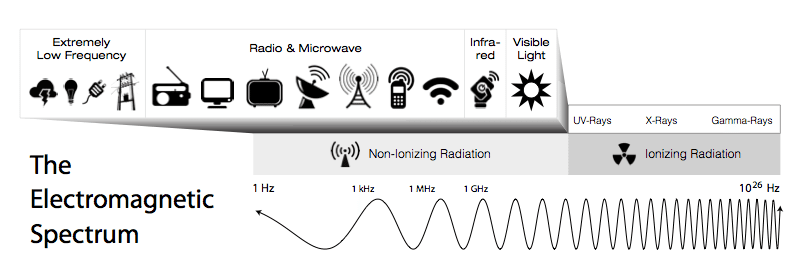
If you look at the sun at around 12 o’clock on a clear day, it appears white. But, if you look at it in the evening, it appears yellowish-red. This is not the sun changing its color. The light projected by the sun is a combination of seven individual colors that make a rainbow. And the color you see depends on the sun’s position and the density of particles in our environment.

Want to Slash Your EMF Health Risks?
Want to Slash Your EMF Health Risks?
Good! Learn the one small change you should make right now.
Sir Isaac Newton performed a series of experiments using prisms in the early 1660s, to understand the color of light coming from the sun. In those experiments, he demonstrated that the clear white light from the sun is actually composed of seven visible colors: red, orange, yellow, green, blue, indigo, and violet – or ROYGBIV.
His work led to major breakthroughs in the subjects of physics, chemistry, optics, and perception. Even today, scientists use Newton’s understanding of visible light to unravel the physical condition and composition of stellar and interstellar matter.
For example, scientists learned the composition of our atmosphere by observing how particles in our atmosphere scatter visible light. They first studied chemical elements and what wavelengths those elements use to scatter energy"Energy" is a fundamental concept in physics, often described as the ability to do work or cause change. In everyday terms, it's what is needed to move things, heat them.... Through these studies, they found that nitrogen and oxygen have the optimal size to scatter energy with the wavelength"Wavelength" is a fundamental concept in the study of electromagnetic fields (EMF), frequency, and energy, playing a pivotal role in the fields of physics, engineering, and various applied sciences. It... of blue light.
And since our sky appears blue when we look at it on a clear sunny day, we can conclude that our atmosphere is primarily made of nitrogen and oxygen.
Now that you have some background knowledge of the visible light section of the electromagnetic spectrum let’s move on to exploring blue light, its effects, and what we can do to mitigate those effects.
What is Blue Light?
Blue light is a type of EMF (electromagnetic fieldIn the context of electromagnetic fields (EMF), the term "field" refers to a region in space where electric and magnetic forces are exerted. An electromagnetic field is generated by electrically...) that sits in the middle of the visible light section of the electromagnetic spectrum. Unlike UV (Ultraviolet) light and infrared, it’s visible to the naked eye.
This light is present everywhere on earth, as the sun, our biggest energy provider, emits blue light. It’s what keeps your body awake, boosts your attention, reaction times, and mood during daylight hours.
The sun’s blue light is extremely beneficial for humans, as millennia of evolution have shaped our bodies to trigger an awakened state as soon as we see it. And if our exposure to this light were only from the sun, then there’d be no problems because the sun sets in the evening, ending our exposure.
But, modern digital screens, LED bulbs, and fluorescent lighting also emit blue light, and we normally don’t stop using these things after sundown. And, this creates a big problem. We’ll talk more about blue light exposure from unnatural sources in later sections of this post.
Why is Blue Light a Matter of Concern and not Others?
Even though ROYGBIV lies in the same section of the electromagnetic spectrum as blue light, they’re not identical. All these colors operate on different wavelengths, and we measure them in nanometers. Look at this chart.
| Color | Wavelength | Frequency"Frequency" in the context of electricity, Electromagnetic Fields (EMF), and wireless communication, can be thought of as the number of times something happens in a second. Specifically, it refers to... |
| Red | 620–750 nm | 400–484 THz |
| Orange | 590–620 nm | 484–508 THz |
| Yellow | 570–590 nm | 508–526 THz |
| Green | 495–570 nm | 526–606 THz |
| Blue | 450–495 nm | 606–668 THz |
| Violet | 380–445 nm | 688–789 THz |
| nm = Nanometer | THz = Terra HertzThe term "hertz" (Hz) is a unit of frequency in the International System of Units (SI), used to measure the number of cycles per second of a periodic phenomenon. It... |
*Indigo was omitted from the visible light spectrum recently because only a few people could differentiate the wavelengths well enough to see it as a different color from violet.
Experts say that UV (similar to violet) and blue light are much more harmful than all the colors in visible light.
We already know that the sun produces UV rays, which are harmful to your eyes. That’s why eye experts recommend wearing sunglasses whenever you go out on a sunny day. And as I mentioned in a previous section, blue light from the sun is not nearly as harmful as it is from digital screens, LED bulbs, and other unnatural blue light sources. Also, it has been proven that these artificial sources don’t produce much UV light to cause significant damage.
If you look at the chart above, blue light has a shorter wavelength, and it operates at an extremely high frequency. Our eyes are not exactly good at blocking blue light, as they are at blocking lights operating at a lower frequency. Blue light passes through our cornea and reaches the retina, which can lead to weaker vision and premature aging of the eyes.
Besides that, blue light has also been known to cause eye strain and retina damage.
Blue Light from Different Sources
As I already mentioned, the sun is Earth’s primary source of blue light. And it’s responsible for controlling our circadian rhythms and helping us stay awake and energetic during the daytime.
But what about blue light from other sources? The short answer is that blue light from other sources does not bring us the same benefits. In fact, it can be detrimental.
Here’s a list of common sources in your house that also produce blue light.
- Tablets and smartphones
- Laptops and computers
- Fluorescent and LED light bulbs
- LED televisions
- Handheld gaming systems
Unlike the sun, these sources can expose you to blue light even at night time.
Using these blue light sources when it’s time for your body to shift into relaxation mode causes several imbalances in your body, which directly hampers your sleep.
That’s why using devices is not recommended just before bedtime. That said, if you turn them off immediately after sundown, the blue light will not affect you. But how many people hit the off switch on all human-made blue light sources as soon as the sun goes down?
Does the Kindle Paperwhite Emit Blue Light?
Many people ask this question since the Kindle Paperwhite is unlike any other tablet in the market. But unfortunately, the answer remains the same.
Kindle Paperwhite and other e-readers like it emit blue light. The only difference between e-readers and tablets is that e-readers emit less blue light than tablets or smartphones. How?
This happens because the Kindle Paperwhite e-reader uses an E-Ink display with a front-lit screen instead of LED or OLED, which are back-lit. What does that mean?
Imagine you’re reading a physical book and using a flashlight to illuminate the pages. That’s the concept of front-lit screens. E-ink displays have an ambient light on either the side or the bottom of the screen that illuminates the screen on your e-reader.
On the other hand, imagine someone shining a flashlight in your eyes and some parts of it are blocked by letter-shaped stickers, thus allowing you to see those letters. That’s the concept of back-lit screens like LED and OLED displays. These don’t need an additional light source, and because of that, these screens expose your eyes to significant blue light.
So, does the Kindle Paperwhite emit blue light? Yes absolutely. But is it as harmful as your cell phone or tablet? No.
Still, we recommend you choose real books over Kindle Paperwhite at night, if possible. But if traditional books aren’t an option, go for it.
Importance of Sleep
According to the National Sleep Foundation, adult men and women need at least 7-9 hours of quality sleep every single night.
A 2018 study revealed that not getting the recommended amount of sleep results in an exponential decline in your body’s ability to function. This experiment found that sleep-deprived people weren’t able to think properly; also, their verbal and reasoning skills weren’t up to the mark.
An average person communicates, plans, and makes crucial decisions daily. And to do that impeccably, you need proper sleep.
Lack of proper sleep also results in many chronic health conditions. Here are some of the well-known health problems that follow sleep deprivation.
Faster aging: In 2018, Canadian researchers studied the sleep patterns of 10,000 volunteers and the consequences of each pattern. They found that people who slept no more than four hours a night suffered from declined thinking ability and faster aging.
Increased risk of diabetes: A research team led by Daniel J. Gottlieb, MD, found that sleeping less than six hours per night can significantly increase the risk of diabetes.
Early death: Research studies have also found that getting less than an adequate amount of sleep increases the risk of early death.
Heart problems: Lack of sleep puts significant stress on your heart, and increases your risk of having a heart stroke or developing other heart-related conditions.
So, you see, having a good night’s rest is crucial for your overall health and wellbeing. But, sleeping 7-9 hours every night seems to be getting less and less feasible as technology advances.
Part of the reason is obviously people being on their gadgets until late at night. But the more pressing issue is the blue light exposure after sundown.
Experts say that exposure to blue light at night suppresses the melatonin production in your body. This means that – even when you do manage to fall asleep after hours of adjusting in your bed – you won’t be able to get the quality of sleep you need.
Blue Light and Melatonin Suppression
Melatonin is a hormone that your pineal gland releases at night. It’s primarily responsible for maintaining your sleep-wake cycle.
When your body starts producing melatonin, it makes you feel drowsy, and eventually, you’ll feel compelled to go to bed and fall asleep.
Sleep Foundation says that exposure to blue light suppresses melatonin production in your body.
When you expose your eyes to blue light from LED bulbs and screens, your brain thinks that it’s still daytime, and the sun is up. Even though your conscious can tell that it’s night and the blue light you’re seeing is not coming from the sun, your evolution-coded unconscious brain doesn’t know the difference.
This disrupts your circadian rhythm and leaves you feeling alert instead of tired. It’s also one of the reasons why insomnia among young people is growing so rapidly.
Misalignment of your circadian rhythm can lead to adverse health effects ranging from metabolic disorders to mental health conditions like depression.
Blue Light Exposure May Induce Early Puberty, Say Scientists
A 2022 study says that prolonged blue light exposure in children could alter their hormone levels and increase the risk of early puberty, or precocious puberty, in clinical terms.
Blue light is linked to the suppression of melatonin, a hormone that regulates your sleep. But making you feel sleepy isn’t the only thing melatonin does. This hormone is also responsible for delaying puberty until the child reaches an optimal age.
As the child grows, their melatonin levels drop to allow for the onset of puberty.
Since blue light suppresses melatonin, it could potentially cause a child to hit puberty earlier than average, resulting in problems like:
- Short stature
- Behavior problems
- Stress
- Greater risk for breast cancer
- Heart disease
- And diabetes
The researchers believe that blue-light-induced melatonin suppression “may risk children experiencing earlier puberty, with implications on future fertility as well.”
The Research
These findings are not from human studies as there’s no way to ethically perform this kind of experiment on humans. Instead, the experiment was conducted on rodents that were exposed to either a standard light cycle or six to 12 hours of blue light.
Dr. Aylin Kilinc Ugurlu, one of the researchers involved in the study, said: “As this is a rat study, we can’t be sure that these findings would be replicated in children, but these data suggest that blue light exposure could be considered as a risk factor for earlier puberty onset.”
He continued, “Although not conclusive, we would advise that the use of blue light emitting devices should be minimized in pre-pubertal children, especially in the evening when exposure may have the most hormone-altering effects.”
What Can You Do?
Blue light from unnatural sources is undoubtedly harmful. But that doesn’t mean you have to quit using your cell phone, stop watching TV, or change the light bulbs in your entire house. You just have to make sure you’re exposed to blue light in moderation, so it doesn’t interfere with your circadian rhythm.
Here are a few tips that will help keep your blue light exposure in check.
Get Rid of Your Cell Phone 2 Hours Before Bed
Your bed is not the place for communicating, being entertained, or gathering more information. Your brain works extremely hard throughout the day, and these are not the things you want it to process when it’s time for it to send crucial commands to the healing and detoxification systems in your body.
Sleep disorder specialist Dr. Harneet Walia from the Cleveland Clinic says, “Checking your phone stimulates the brain, so we are more active and awake. Even just a quick check can engage your brain and prolong sleep.”
When it comes to smartphones, there’s a huge psychological factor at play. Modern phones are designed in a way that forces you to feel like you can never really log-off, even during sleep.
This degree of engagement with smartphones keeps your brain highly active, and that prohibits you from having a quality REM sleep. In addition to this, your eyes are exposed to a massive amount of blue light, making it extremely hard for you to fall asleep.
Experts say that you need to get rid of your smartphone at least two hours before bed (for various reasons, you should also keep it away from you while you sleep). This will give your brain adequate time to adjust to the night environment, and you’ll be able to sleep well.
Dim Your Lights Before Bedtime
Darkness sends a crucial message to your body that it’s time to start feeling sleepy. If you have bright lights in your home’s common areas, it signals your body to stay awake and not feel tired enough to fall asleep.
Now, I understand that it may not be possible to dim all lights in your home. So, my advice is to try and reduce the light’s intensity, at least in your bedroom — or, get a red light. That’s even better.
According to sleep experts, the wavelengths of red light stimulate melatonin production in your body.
In 2012, a group of Chinese researchers experimented to understand the effects of red-light therapy on female athletes. They exposed the subjects to red light for 30 minutes every night for 14 days.
When the researchers compared the athletes’ test results with the control group who didn’t receive any therapy, they found a significant difference. The athletes were sleeping better, their melatonin production improved, and their athletic performance had enhanced.
Another 2019 research study included 19 people in an office environment. The researchers installed a combination of red and ambient white light in the office to be activated in the afternoon. After the installation, they saw a significant improvement in the workers’ circadian rhythm.
Before the invention of light bulbs, modern gadgets, and digital screens, the instructions were clear: Day contains light, and it’s for being awake; night contains darkness, which is for sleep.
Even though modern technology has completely changed our ways of living, this still applies to our bodies. So, follow this instruction — and you’ll feel a lot better waking up tomorrow.
Use the Blue Light Filter On Your Devices
Most modern gadgets like smartphones, laptops, and tablets come equipped with a feature called the “blue light filter,” “night mode”, or in some cases, the “eye comfort shield.” You can simply turn this on if you need to use your gadgets at night.
Note that I don’t recommend using your gadgets unnecessarily at night just because you have this filter turned on. Because, as I mentioned above, there’s still the psychological factor of using tech gadgets that interferes with your sleep.
The best way to reduce the effect of blue light on your sleep is to get rid of your gadgets way before your bedtime.
But if you work at night or you have something important to do — do it with this filter turned on.
You can do a simple Google search to fetch instructions on activating this feature on your device. You can also schedule your device to turn on the blue light filter at night and automatically turn it off in the morning.
Use Blue Light Filter Glasses
Blue light filter glasses are an effective tool to prevent eye damage from your screen’s blue light. These glasses are also often treated to prevent glare from the screen, which lessens the strain on your eyes.
As Dr. Sheri Rowen, MD, FAC, explains: “Blue light lenses filter out blue light by blocking the transmission of a specific segment or range of wavelengths. The lenses are designed to help reduce the occurrence of digital eye strain and avoid circadian rhythm cycle disruption, affecting sleep and overall wellbeing.”
If you work on computers for a long time, or you’re a shift worker, do consider using these glasses. In fact, you can choose to get SYB’s in-house designed and extremely effective blue light filter glasses. More on that below.
Introducing the SYB Blue Light Glasses
SYB is all about making technology safer, healthier, and more comfortable to use in everyday life. That’s what we’re known for, and that’s what our customers want, so it’s no surprise that we’ve had many people writing in to ask if we can help them out with blue light and glare from screens.
So, to meet this demand, we’ve designed and developed our very own blue light filter glasses. They’re made with special materials to block 35% of the blue light coming towards your eyes.
Why 35%? Because that’s the strongest level of protection you can get on clear all-day glasses right now. And it works.
You can wear your SYB Blue Light Glasses comfortably all day long, and their special lenses will give your eyes enough protection to avoid blue light-induced health effects.
And here’s the most exciting part: they don’t interfere with your style at all. The glasses come with stylish black frames, which are great for men and women, adults and teens.
Universally Accepted Scientific Principles
There are many blue light filter glasses on the market that either don’t work or have orange or red-tinted lenses, which are not optimal for all-day wear.
Don’t get me wrong, I’m not saying that orange and red-tinted lenses don’t work. They’re super effective. But, when you wear them all day, your eyes get accustomed to that light. As a result, people can experience pain in their eyes when they face blue light without those lenses on. These darker lenses can also interfere when you’re working on your computer all day.
Due to this very reason, we designed our SYB Blue Light Glasses to be clear. This way, you get just the right amount of blue light exposure for your eyes not to hurt when you take your glasses off, while still receiving enough protection to avoid health effects – like sleeplessness – that come with blue-light exposure.
We’ve used universally accepted scientific principles in our design. And not only that, you get your own testing kit so that you can see the shielding power"Power" in a scientific context refers to the rate at which work is done or energy is transferred. In simpler terms, it's how fast something is using energy. For example,... for yourself.
Includes Full Accessories
Each pair of SYB Glasses comes with:
· A stylish case
· A microfiber pouch
· A microfiber cloth
· AND a blue light testing kit
Plus, how about a 30-day no questions asked return policy and a lifetime warranty?
If you work on a computer or you use devices with screens a lot, the SYB Blue Light Glasses are a must-have. It’s a small investment that will pay huge dividends in terms of your health and comfort. So, head to our website ShieldYourBody.com today and get your own pair.
Final Thoughts
We can’t stop technology from advancing. And why would anyone even try to stop that? Technology is amazing, and it has made our lives so much easier. The wise thing to do is to build a healthy relationship with it, so you can enjoy the advancement in technology without having to risk your health.
If you want to learn more about how you can improve your relationship with technology, tune in to “The Healthier Tech Podcast.” It’s produced by my company ShieldYourBody.com, and it features experts from different disciplines, from whom you’ll learn actionable tips on creating a healthy balance between technology and your life.
